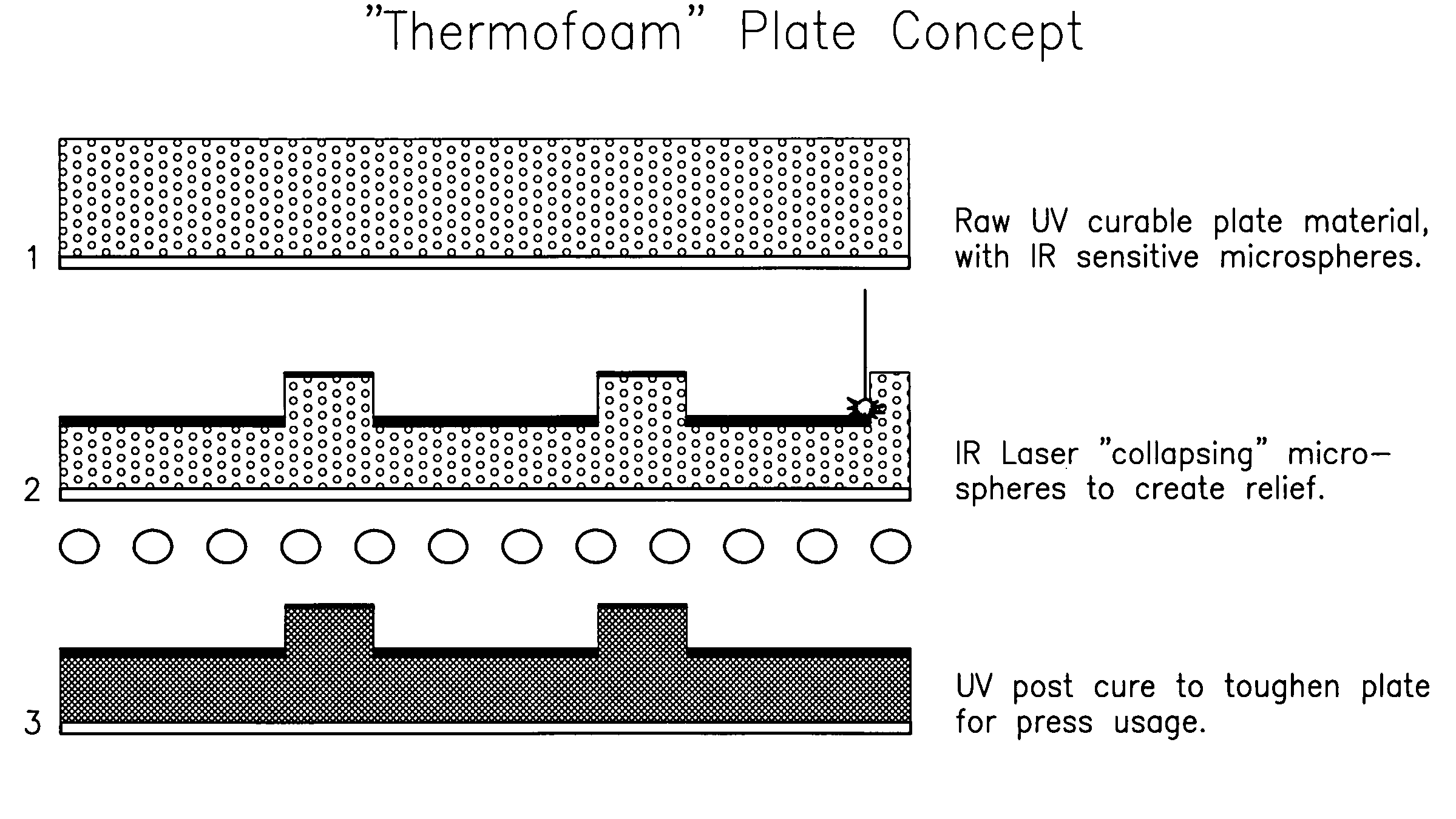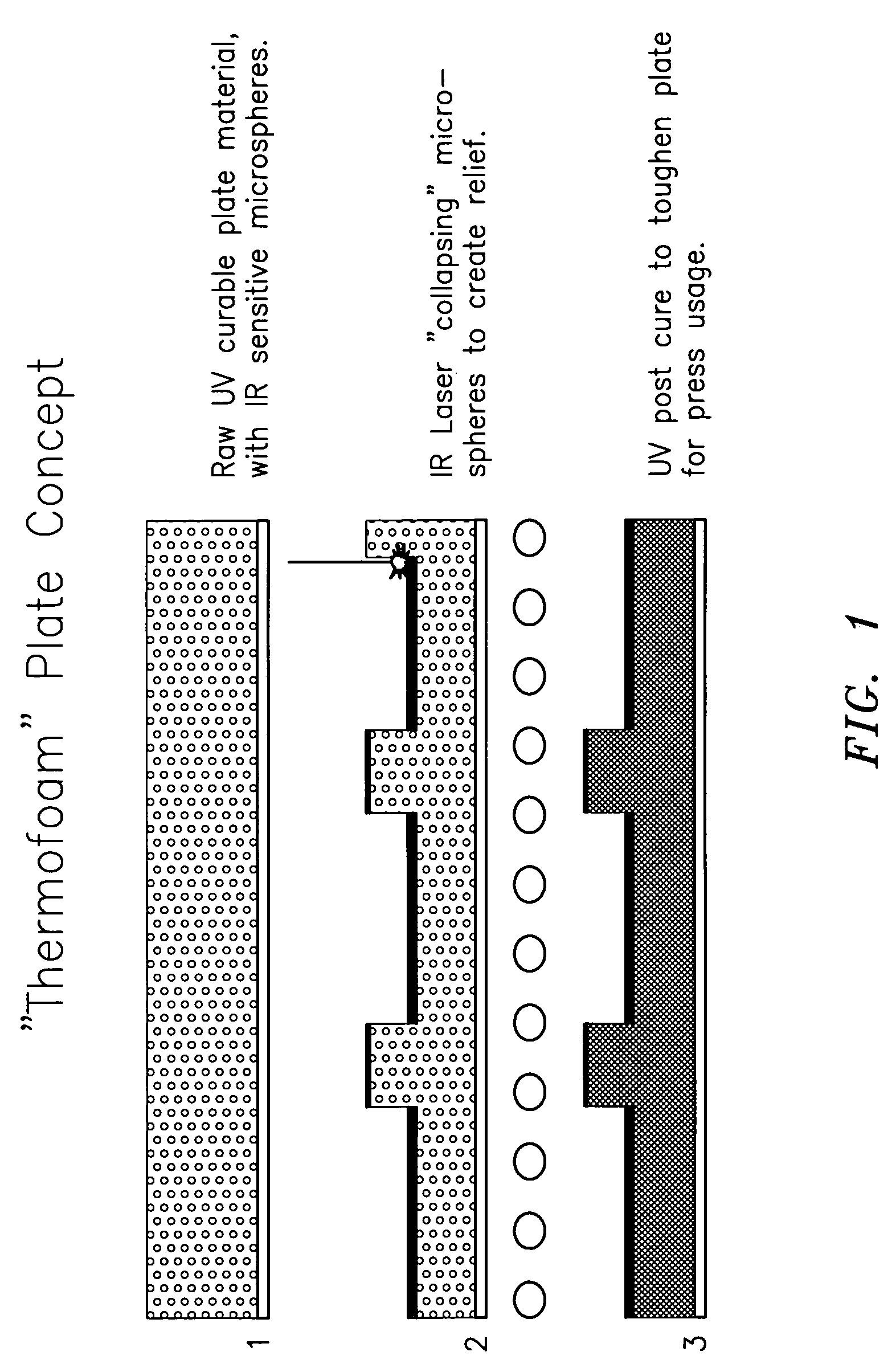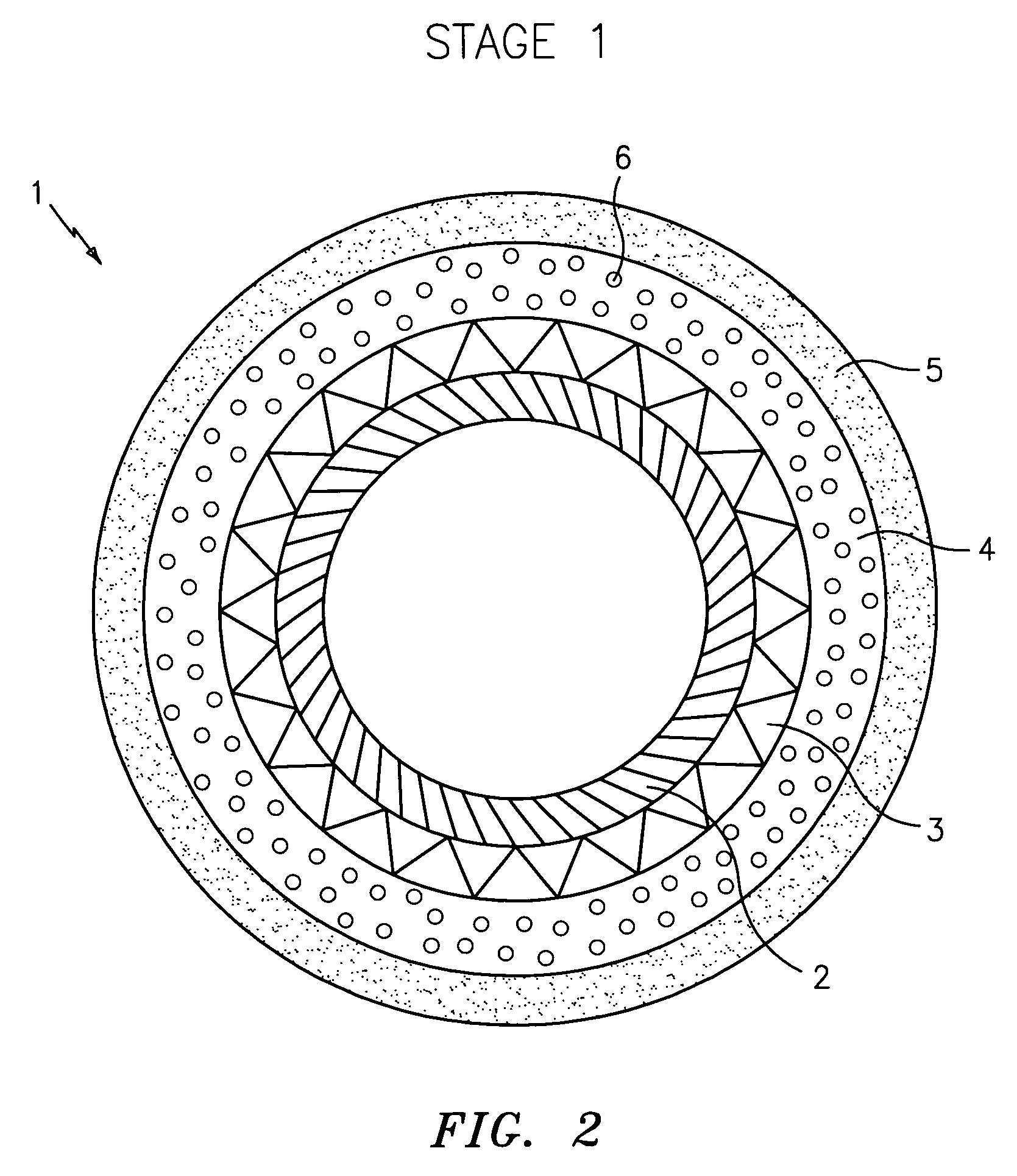Processless digitally imaged photopolymer elements using microspheres
a technology of photopolymer elements and microspheres, which is applied in the direction of photosensitive materials, instruments, photomechanical equipment, etc., can solve the problems of limited print performance, uncured non-image areas, water-developable printing plates, waste of resources, etc., and achieve the effect of reducing the final density of the photopolymer formulation
- Summary
- Abstract
- Description
- Claims
- Application Information
AI Technical Summary
Benefits of technology
Problems solved by technology
Method used
Image
Examples
example 1
Preparation of a Processless Flexographic Plate Using Unexpanded Microspheres Sensitive to 830 nm Lasers
[0121]A printing plate is manufactured according to the composition listed in Table 4, using unexpanded microspheres (Expancel DU microspheres). The ingredients are mixed in a Sigma mixer, and the temperature of the mixer is slowly and gradually increased, until it reaches the “optimum” expansion temperature for the unexpanded microspheres to increase their volume. The optimum expansion temperature is determined through routine experimentation, and depends on the particular type and size of unexpanded microspheres that are used. Care is taken not to exceed the “maximum” expansion temperature so as to avoid microsphere collapse. The composition is hot-pressed between 2 clear polyethylene terephthalate sheets (PETs) at a temperature that is below the maximum expansion temperature of the microspheres. One of the two PETs has a slip film or release coating to facilitate easy removal.
[...
example 2
Preparation of a Processless Flexographic Plate Using Unexpanded Microspheres Sensitive to 1064 nm Lasers
[0126]A similar procedure to Example 1 is followed, using the composition listed in Table 5, where the microspheres are unexpanded microspheres (Expancel DU microspheres). The subsequent plate development and manufacture is the same as in Example 1, except that a commercially available 1064 nm plate-setter such as Barco's CDI™ is used instead. The digital file from the computer is transferred onto the plate. In the areas where the laser interacts with the photopolymer, the microspheres collapse, creating a relief. Different energy densities are employed to create areas of deep and shallow relief.
[0127]During the main laser collapse step, a “flash” or “bump” exposure is used throughout to collapse a monolayer on the surface to form a denser layer and create the ultimate printing surface. The plate is cured by a conventional face exposure and post-cured to hold 1% dots at 133 lines...
example 3
Preparation of a Processless Flexographic Plate Using Expanded Microspheres Sensitive to 830 nm Lasers
[0129]A printing plate is manufactured according to the composition listed in Table 4, using expanded microspheres (Expancel DE microspheres). The ingredients are mixed in a Sigma mixer, and the compound is hot-pressed between 2 clear PETs, one of which has a slip film or release coating. Alternately, the plate is manufactured in a twin-screw extruder.
[0130]After lamination, the coversheet is removed and discarded. The plate is back-exposed through the backing, and mounted on a commercially available 830 nm flexographic plate-setter such as Creo's ThermoFlex® 5280. The digital file from the computer is transferred onto the plate. In the areas where the laser interacts with the photopolymer, the microspheres will collapse, creating a relief. Different energy densities are employed to create areas of deep and shallow relief.
[0131]During the main laser collapse step, a “flash” or “bump...
PUM
 Login to View More
Login to View More Abstract
Description
Claims
Application Information
 Login to View More
Login to View More - R&D
- Intellectual Property
- Life Sciences
- Materials
- Tech Scout
- Unparalleled Data Quality
- Higher Quality Content
- 60% Fewer Hallucinations
Browse by: Latest US Patents, China's latest patents, Technical Efficacy Thesaurus, Application Domain, Technology Topic, Popular Technical Reports.
© 2025 PatSnap. All rights reserved.Legal|Privacy policy|Modern Slavery Act Transparency Statement|Sitemap|About US| Contact US: help@patsnap.com



